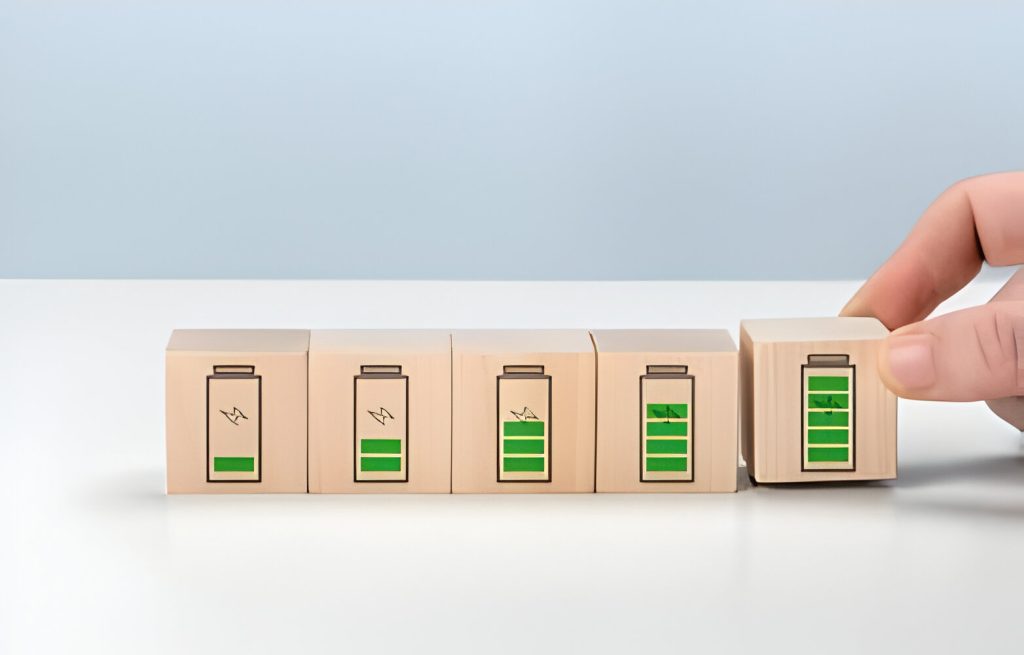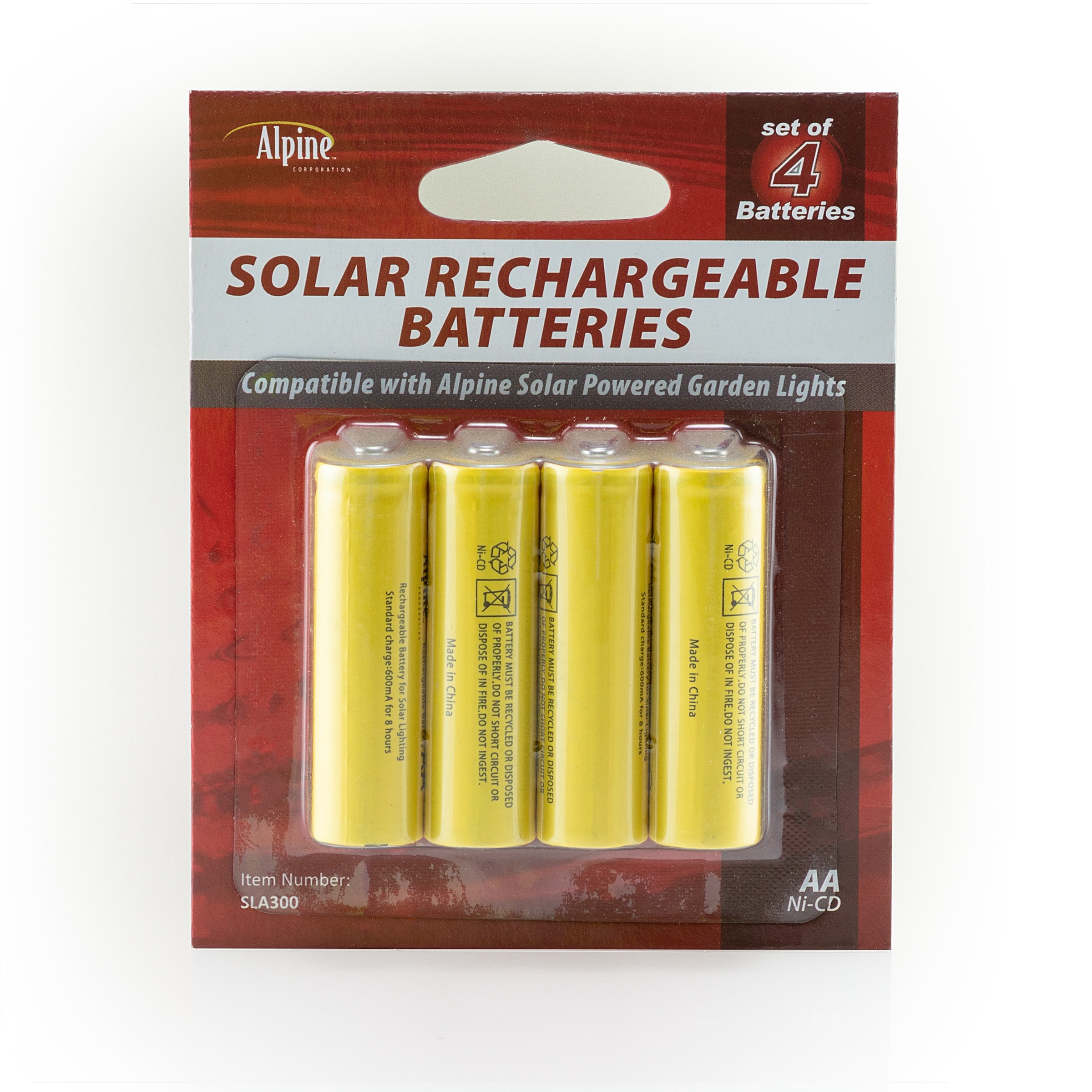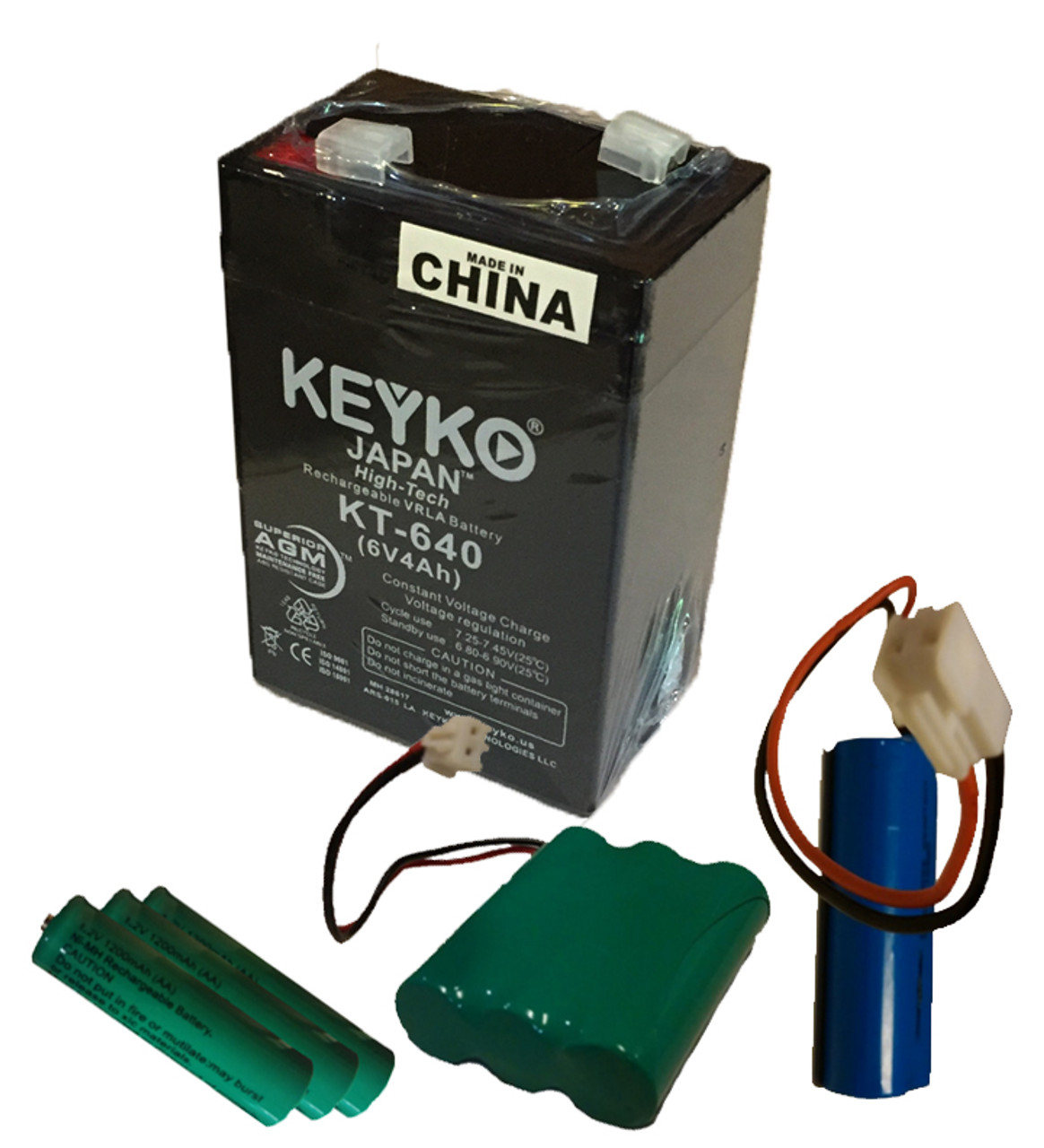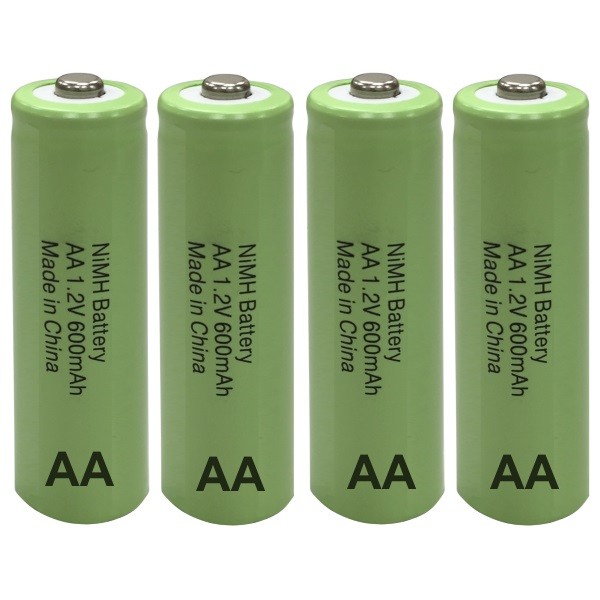
Credit: www.solarilluminations.com
Introduction To Solar Light Batteries
Solar lights brighten outdoor spaces without traditional power sources. Sunlight energy is stored in batteries during the day. This energy powers the lights after sunset. Understanding solar light batteries is critical to efficient solar lighting.
The Role Of Batteries In Solar Lighting
Batteries serve as the backbone for solar lights. They ensure consistent lighting, even when the sun isn’t shining. Without batteries, solar lights cannot function after dark. They collect and store solar energy, releasing it as needed.
- Energy storage: Batteries hold solar power for later use.
- Power supply: They provide energy to the lights at night.
- Longevity: Good batteries mean longer light duration.
Types Of Batteries Used
Different solar lights use various battery types. Every kind has advantages and disadvantages of its own. The most typical ones are:
| Type | Pros | Cons |
|---|---|---|
| Nickel-Cadmium (NiCd) | Cost-effective, reliable | Memory effect, toxic |
| Nickel-Metal Hydride (NiMH) | More capacity, less toxic | Costlier, temperature-sensitive |
| Lithium-Ion (Li-Ion) | High energy density, lightweight | More expensive, ageing effect |
| Lead-Acid | Long-lasting, affordable | Bulky, requires maintenance |
Choosing the right battery depends on light requirements and environmental conditions. Users must balance cost, performance, and longevity when selecting batteries for their solar lights.
Factors Influencing Battery Longevity
Solar light batteries power our gardens and homes with clean energy. Yet, their lifespan varies. Different factors affect how long they last. Understanding these factors ensures your lights shine bright for years.
Impact Of Charge Cycles
Charge cycles play a crucial role in battery life. Every battery has a set number of cycles it can handle. One full charge and discharge constitute a cycle. More cycles mean a shorter battery life.
- A battery with 500 cycles may last less than one with 1000 cycles.
- Partial charges can extend the overall lifespan.
Temperature Effects
The right temperature keeps batteries healthy. Extreme cold or heat harms them. Freezing slows down chemical reactions. Heat speeds them up too much. Both reduce battery life.
- Avoid high temperatures for longer battery life.
- Store batteries in a cool, dry place.
Quality And Brand Variations
Quality and brand matter. Top brands often use better materials and technology. This leads to longer-lasting batteries. Cheaper options may save money now but could cost more in replacements.
| Brand | Quality | Estimated Lifespan |
|---|---|---|
| Brand A | High | 5 years |
| Brand B | Medium | 3 years |
| Brand C | Low | 1 year |
Choose a reputable brand for your solar light batteries. It ensures performance and value.

Maximizing Battery Life
Solar lights are eco-friendly and cost-effective, but their performance hinges on battery life. Maximizing battery life ensures consistent lighting, reduces waste, and saves money. Explore how to extend the life of your solar light batteries with proper care and intelligent practices.
Proper Maintenance Techniques
Good habits can keep batteries running at peak performance. Clean solar panels regularly to ensure maximum charge. Wipe the battery compartment to prevent corrosion. Check connections to avoid energy loss. Follow these steps for longer-lasting batteries.
- Wipe down solar panels every month.
- Inspect battery terminals for signs of corrosion.
- Replace batteries if they show wear and tear.
Optimal Charging Practices
A fully charged battery powers a solar light best. Charge new batteries for a complete cycle before use. Place solar lights in areas that receive ample sunlight. Avoid shady spots to ensure full daily charges.
| Charge Before Use | Daily Sun Exposure |
|---|---|
| Full cycle for new batteries | Minimum of 6 hours |
Storage Tips For Prolonged Life
Store batteries correctly to extend their life. Keep them in a cool, dry place. Avoid extreme temperatures which can damage them. Remove batteries from solar lights if not in use for long periods.
- Remove batteries from lights during storage.
- Store in a relaxed, dry environment.
- Avoid places with hot or cold extremes.

Credit: www.lowes.com
Efficiency Metrics Explained
Let’s dive into the efficiency metrics of batteries for solar lights. These metrics help you choose the best battery for your needs.
Understanding Capacity And Discharge Rates
Battery capacity measures how much energy a battery holds. It’s like a tank of fuel. The bigger the tank, the longer the light shines. Discharge rate tells how fast a battery can release its energy. A slower discharge rate means the light lasts longer.
- Capacity is measured in milliampere-hours (mAh).
- Discharge rate affects performance over time.
Energy Density Significance
Energy density is crucial. It shows how much power a battery can store in a given size. Higher energy density means more power in less space.
| Type | Energy Density |
|---|---|
| Lithium | High |
| NiMH | Medium |
| Lead Acid | Low |
Comparing Battery Efficiencies
Comparing battery efficiencies helps us see which battery is best for solar lights.
- Check the capacity rating (mAh).
- Look at the energy density.
- Consider lifetime and cost.
Always choose a battery that matches your solar light needs.
Solar Battery Innovations
Solar battery innovations are revolutionizing how we store energy from the sun. These advancements mean we can light our homes and streets more efficiently than ever. Let’s explore the latest breakthroughs and the future of solar batteries.
Recent Technological Advancements
Recent leaps in technology have made solar batteries better and longer-lasting. Here’s what’s new:
- Lithium-ion batteries dominate the market with improved life spans and storage capacity.
- Solid-state batteries offer increased safety and energy density.
- Software integration allows intelligent management of charging and discharging cycles.
These advancements help solar lights shine brighter and longer, even on cloudy days.
Future Trends In Solar Batteries
Looking ahead, the future is bright for solar batteries:
- Eco-friendly materials are on the rise, promising greener batteries.
- Graphene batteries could lead to quicker charging and more power.
- Integration with IoT for more intelligent energy use is becoming a reality.
These trends aim to make solar batteries more efficient, affordable, and accessible.
Environmental Impact Of Solar Batteries
Solar lights harness the sun’s power to light up our nights. They seem eco-friendly at first glance. Yet, their batteries raise essential questions. What happens when they no longer hold a charge? Do they harm the environment? This section delves into the ecological footprint of solar batteries.
Recycling And Sustainability
Solar battery disposal matters. Old batteries can leak toxic chemicals. They can contaminate soil and water. Recycling is the key to reducing this risk. Here’s how recycling helps:
- It prevents pollution by reducing harmful waste.
- Saves resources by recovering valuable materials.
- Conserves energy compared to producing new batteries.
Many regions have solar battery recycling programs. These programs ensure proper handling and processing.
Eco-friendly Battery Options
Not all batteries have equal environmental impact. Some are greener. Here are eco-friendlier choices for solar lights:
| Battery Type | Pros | Cons |
|---|---|---|
| Nickel-Metal Hydride (NiMH) | Less toxic, more recyclable | Lower energy density |
| Lithium Iron Phosphate (LiFePO4) | Long life, high efficiency | Higher cost |
Choose batteries with lower environmental costs. Look for high durability and recyclability.
Cost Analysis
Exploring the costs of batteries for solar lights is vital. This section delves into initial investments and long-term savings. It also covers available grants and subsidies.
Initial Investment Vs. Long-term Savings
The upfront cost of solar batteries can be high. Yet, their ability to reduce energy bills is significant. These savings may eventually be more than the original cost.
Consider this simple breakdown:
| Item | Cost | Savings Over 5 Years |
|---|---|---|
| Solar Battery | $500 | $750 |
This table shows that savings can exceed costs.
Grants And Subsidies For Solar Batteries
Many governments offer financial help to encourage solar energy use. This can significantly reduce your initial costs.
- Check local government websites for info.
- Some states provide tax rebates.
- Utility companies might offer incentives.
These benefits make solar batteries more affordable.

Choosing The Right Battery For Your Solar Lights
Investing in solar lights is a smart move for energy savings and eco-friendliness. The battery is the system’s primary component. A suitable battery ensures your solar lights shine bright all night. Let’s explore how to pick the perfect battery for your solar lights.
Assessing Your Energy Needs
Calculate the power requirements of your solar lights. Consider the number of lights and their wattage. This helps determine the battery capacity needed for optimal performance.
- Count your solar lights.
- Check each light’s wattage.
- Multiply for total wattage.
Choose a battery with enough capacity to power your lights for several hours after sunset. Always opt for a bit more capacity than calculated to cover cloudy days.
Compatibility With Solar Panels
Ensure the battery matches your solar panel’s output. The voltage and current of the battery must align with your panels. This guarantees efficient charging during the day.
| Solar Panel Output | Battery Required |
|---|---|
| 6V | 6V Battery |
| 12V | 12V Battery |
Check the charge controller as well. It should be compatible with both your battery and solar panels.
Warranty And Support Considerations
Select a battery backed by a solid warranty. A good warranty reflects the manufacturer’s confidence in their product. Look for long-term warranties and read the terms carefully.
Consider the manufacturer’s support as well. Quick and helpful support can save you time and money if issues arise.
- Seek minimum 1-year warranty
- Check for straightforward warranty claims
- Ensure responsive customer service
Common Challenges And Troubleshooting
Understanding the challenges with solar light batteries helps keep your outdoor space lit. Let’s troubleshoot common issues to ensure peak performance.
Dealing With Reduced Capacity
Solar light batteries may hold less charge over time. This is normal but can reduce lighting time.
- Clean solar panels regularly.
- Ensure total sunlight exposure.
- Test batteries with a multimeter.
Proper maintenance can extend battery life.
Fixing Common Issues
Let’s fix your solar light glitches. Follow these steps:
- Check for obstructions blocking the light sensor.
- Wipe the solar panel clean for better charge.
- Inspect wires for damage. Replace if needed.
- Turning the lights on and off will reset them.
These steps often solve most problems.
When To Replace Your Battery
| Sign | Action |
|---|---|
| Dim lights | Test and replace the battery. |
| Short lighting duration | Replace battery for longer life. |
| No light | Ensure the battery is connected correctly. Replace if necessary. |
Replace batteries every 1-2 years for best performance.

Credit: www.maxsainnovations.com
Frequently Asked Questions
What Type Of Batteries Do You Use For Solar Lights?
Solar lights typically use rechargeable NiMH (Nickel-Metal Hydride) or NiCd (Nickel-Cadmium) batteries for optimal performance and eco-friendliness.
Is It Worth Replacing Batteries In Solar Lights?
Replacing batteries in solar lights is cost-effective and extends their lifespan, making it a worthwhile investment for continuous outdoor illumination.
Do Solar Lights Accept Standard AAA Batteries?
No, you should not use regular AA batteries in solar lights; they require rechargeable batteries to function properly.
Can You Buy New Batteries For Solar Lights?
Yes, you can purchase replacement batteries for solar lights at hardware stores, online retailers, or specialized lighting shops.
Conclusion
Choosing the right batteries for your solar lights is crucial for optimal performance and longevity. Consider factors like capacity, durability, and type before purchasing. With the right information and careful selection, you can ensure your outdoor spaces remain brightly lit and energy-efficient for years to come.

I am a battery specialist writer and blogger based in the USA & UK . I have been working with battery power energy for 3 long years and I give trips on low battery power problem and solutions . I have a lot of experience with battery power and I share them here.

